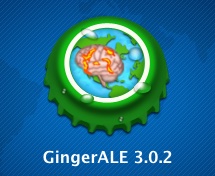Context - Disease
Disease
The context of disease is used for experiments which are attempting to isolate the effect of a physical or mental illness. This is achieved by investigating a patient group with a relevant diagnosis. This group can be studied in isolation, parsing out the heterogeneity of the disease, or in contrast to a group of healthy controls. If one of the subject groups used in an experiment have a diagnosis, then the context should probably include disease.
The term disease is used broadly, including developmental, genetic and acquired disorders of any etiology. For example:
- (Functional) A study looks at fibromyalgia patients and their brain activity when perceiving pain.
- (Structural) A researcher finds grey matter density reduction in women with anorexia nervosa.
- 44237 Subjects
- 1271 relevant publications
- 5912 experimental contrasts
- 38655 coordinates reported
Co-coded Terms
Context - Disease
Disease
The context of disease is used for experiments which are attempting to isolate the effect of a physical or mental illness. This is achieved by investigating a patient group with a relevant diagnosis. This group can be studied in isolation, parsing out the heterogeneity of the disease, or in contrast to a group of healthy controls. If one of the subject groups used in an experiment have a diagnosis, then the context should probably include disease.
The term disease is used broadly, including developmental, genetic and acquired disorders of any etiology. For example:
- (Functional) A study looks at fibromyalgia patients and their brain activity when perceiving pain.
- (Structural) A researcher finds grey matter density reduction in women with anorexia nervosa.
- 82486 Subjects
- 1187 relevant publications
- 3968 experimental contrasts
- 25502 coordinates reported
Co-coded Terms
Context - Disease
Disease
The context of disease is used for experiments which are attempting to isolate the effect of a physical or mental illness. This is achieved by investigating a patient group with a relevant diagnosis. This group can be studied in isolation, parsing out the heterogeneity of the disease, or in contrast to a group of healthy controls. If one of the subject groups used in an experiment have a diagnosis, then the context should probably include disease.
The term disease is used broadly, including developmental, genetic and acquired disorders of any etiology. For example:
- (Functional) A study looks at fibromyalgia patients and their brain activity when perceiving pain.
- (Structural) A researcher finds grey matter density reduction in women with anorexia nervosa.
- 38542 Subjects
- 631 relevant publications
- 2434 experimental contrasts
- 10462 coordinates reported


